
by USGS Mineral Commodities Team Tuesday, June 12, 2018
By Lori E. Apodaca, USGS mineral commodity specialist
GEOLOGIC OCCURRENCE
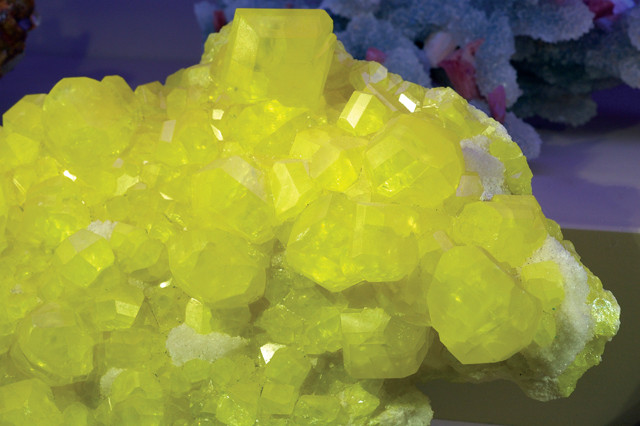
In 1777, French chemist Antoine Lavoisier showed that sulfur was an element, not a compound. Credit: Eric Hunt, CC BY-SA 2.5
Sulfur is one of the few elements found in elemental form in nature and has been used in elemental form since ancient times. It forms near volcanic vents and fumaroles, and small quantities of native sulfur form during the weathering of sulfate and sulfide minerals. However, the largest concentrations of sulfur are found associated with sulfide ore mineral deposits and with evaporative minerals in salt domes. As the 16th-most abundant element in Earth’s crust, sulfur is plentiful and can be found around the world.
GLOBAL PRODUCTION OF SULFUR
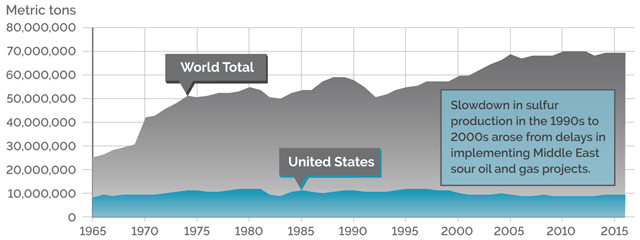
Credit: K. Cantner, AGI.
GLOBAL PRODUCTION OF SULFUR, 2016
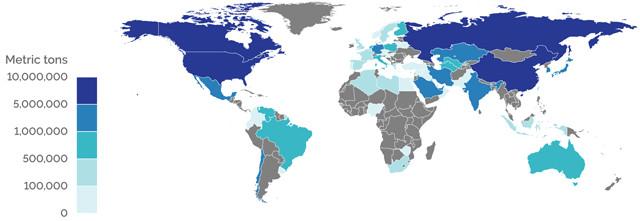
Credit: K. Cantner, AGI.
U.S. APPARENT CONSUMPTION OF SULFUR
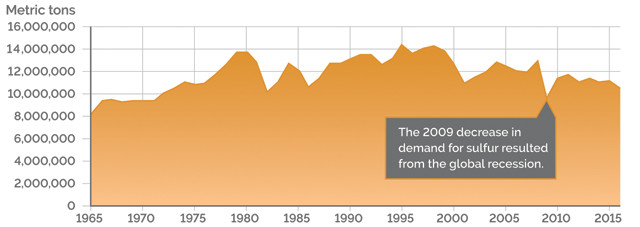
Credit: K. Cantner, AGI.
U.S. IMPORTS OF SULFUR BY COUNTRY, 2017
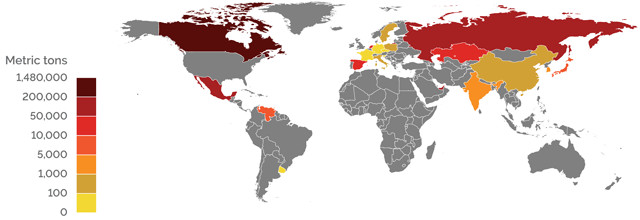
Credit: K. Cantner, AGI.

Combining sulfur with natural rubber latex, a process known as vulcanization, made it possible to make rubber tires. Credit: Ken T1381, CC BY-SA 3.0
COMMERCIAL USAGE
The industrial revolution expanded demand for sulfur to produce sulfuric acid, an essential component of many industrial processes. The largest use of sulfuric acid is in the production of phosphate fertilizer.
Other uses of sulfuric acid include metal finishing, oil refining and ore processing, as well as the production of medicines, plastics, paints, rubber, steel and storage batteries. Elemental sulfur is used as a plant nutrient in agriculture.
FUN FACTS
Sulfur is also known as brimstone.
The Chinese invented gunpowder in the ninth century using sulfur, potassium nitrate and charcoal.
The strong odors of rotten eggs, garlic and onions come from sulfur compounds.
Primary production sources of sulfur have changed dramatically: In the early 20th century, most production came from mined sulfur or pyrite. Today, most comes from sulfur emissions controls.
Visit minerals.usgs.gov/minerals for more information
design by K. Cantner and N. Schmidgall, AGI

Credit: United States Geological Survey.

Credit: The American Geosciences Institute.
© 2008-2021. All rights reserved. Any copying, redistribution or retransmission of any of the contents of this service without the expressed written permission of the American Geosciences Institute is expressly prohibited. Click here for all copyright requests.